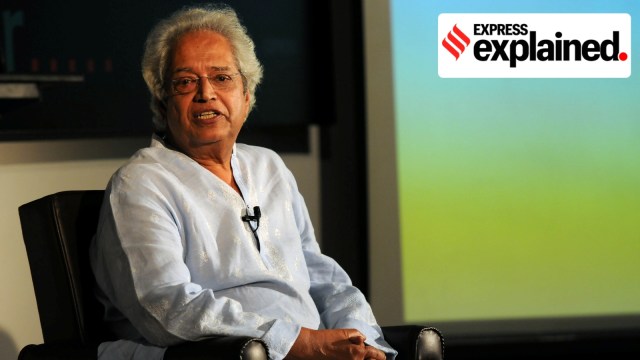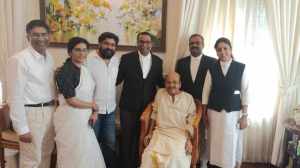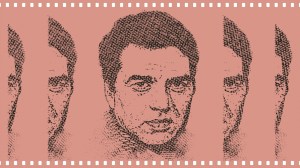Is there an Indian psychoanalysis? Understanding Sudhir Kakar’s cultural turn
Dr Sudhir Kakar, the ‘father of Indian psychoanalysis’, was born on July 25, 1938. His work changed the landscape of psychoanalysis in India
 Sudhir Kakar at Museum and Art Gallery in Chandigarh in 2013. (Express Photo)
Sudhir Kakar at Museum and Art Gallery in Chandigarh in 2013. (Express Photo)Born on this day in 1938, Sudhir Kakar, the “father of Indian psychoanalysis”, is celebrated for bringing a distinct “Indianness” to the field.
Psychoanalysis is a theory of mind and a clinical practice developed by Sigmund Freud. It primarily focuses on the relationship between “conscious” thoughts, feelings, and behaviours, and the “unconscious” mind. Notably, Freud and others after him emphasised upon the discipline’s universality.
By interpreting the Indian psyche through myths and societal norms, Kakar infused psychoanalysis with an Indian cultural richness, and redefined how the discipline could engage with non-Western minds. His ideas continue to reshape how India thinks about the mind, culture, and identity today. Kakar passed away last year.
Kakar’s ‘Indian’ psychoanalysis
Kakar believed that Freud’s theories, while revolutionary, were embedded in European culture, meaning they often failed to resonate with Indian psychological realities. He argued that Indian culture views reality differently from the post-Enlightenment West.
“In the traditional Indian view, which still exerts a powerful influence on how even most modern Indians view marriage and family, parent-sons and filial bonds among the sons living in an extended family override the importance of the couple as the foundation of the family,” he said in an address to the Indian Psychoanalytic Society in 2022.
But rather than rejecting psychoanalysis, Kakar expanded it by interpreting the unconscious through the lens of Indian myths, familial structures, and spiritual traditions.
He introduced concepts such as the “Ganesha Complex” as an Indian-alternative to Freud’s influential Oedipus Complex, which borrowed from Greek mythology to explain a son’s sexual attitude to his mother and hostility towards the father.
“My main argument is that the ‘‘hegemonic narrative’’ of Hindu culture as far as male development is concerned is neither that of Freud’s Oedipus nor that of Christianity’s Adam,” he wrote in ‘Hindu Myth and Psychoanalytic Concepts: The Ganesha Complex’ published in Asian Culture and Psychotherapy: Implications for East and West (2005).
Kakar used the myth of Skanda (also known as Kartikeya) and Ganesha to explain India’s culturally sanctioned dependence on the maternal figure. Unlike Skanda, Ganesha in the myth chooses maternal closeness over heroic independence.
“By remaining an infant… Ganesha will never know the pangs of separation from the mother… That Ganesha’s lot is considered superior to Skanda’s is perhaps an indication of the Indian man’s cultural preference in the dilemma of separation-individuation,” Kakar wrote.
Kakar drew heavily from Indian epics, folklore, and even popular cinema to reveal how collective fantasies shape the unconscious. “The self,” he said “is a system of reverberating representational worlds — representations of culture, primary family relationships and bodily life.”
While Kakar’s work itself was rooted in Hindu culture, he envisioned an Indian psychoanalysis that would engage critically with Western theories. “The wish is that a future generation of Indian analysts realises that a critical stance is now needed after a long, much too long phase of idealisation of Western analytic gurus,” he said.
Impact on clinical settings
Psychoanalysts in India today draw deeply from Kakar’s reimagining of psychoanalysis, integrating his culturally rooted insights into clinical practice, specifically acknowledging the imprint of collective histories, myths, and identities on the unconscious.
As Amrita Narayanan, a clinical psychologist and psychoanalyst, wrote in ‘An Elastic Indianness: In Memory of Sudhir Kakar’ (2024), Kakar believed that the Indian “ego”, formed through the blurring of self and other, was fundamentally different than the Western, autonomous conception. “The ‘I am’ and ‘we are’ are birthed simultaneously for Indians,” she wrote, suggesting that for many, social expectations are internalised as personal desires.
This deep enmeshment of self and community has major implications for how therapists understand emotional conflict, sexuality, and even violence.
“Much like Freud, Kakar’s quest for clues in folk tales, fables, and epics holds the reimagination of Indianness, in which the self yearns for spirituality,” said Pulkit Sharma, a clinical psychologist and psychotherapist.
For many clinicians, Kakar’s recognition of India’s spiritual imagination, through epics, rituals, and mythology, reshaped what counts as healing. Myths of Ganesha and Ram, used by Kakar to illustrate the nurturing and sacrificial Indian son, challenged Western tropes like Oedipus and offered a new vocabulary for male development. Similarly, fantasies of femininity, coded as nurturing, maternal, and emotionally sensitive, are central rather than deviant.
“In the clinical room, sensitivity is given to caste, religion, gender, family, generational myths, and traditions that shape the subjectivity of the client. All of it informs the therapist about indigenous narratives and themes that help in learning the unconscious script. This accessibility serves as a guide to meaningful therapeutic growth,” Sharma said.
“The psychotherapist must know that it’s not merely a defence, but a well-meaning psychological structure that fosters healing. The psychopathology is not intrapsychic but extrapsychic in Kakar’s works. It further carries the ruptures of colonialism, modernity, and globalisation,’ he added.
- 01
- 02
- 03
- 04
- 05






































